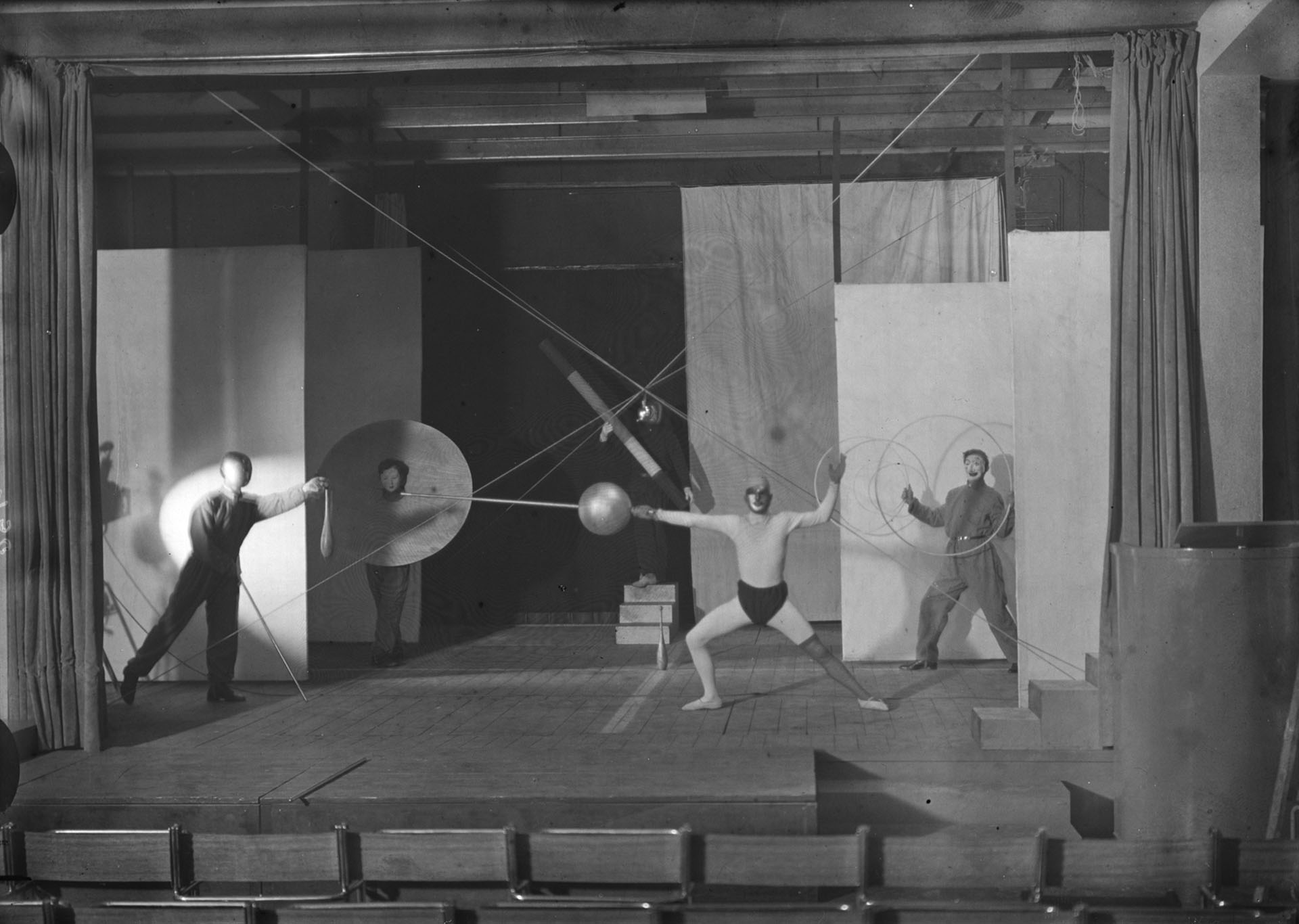The Bauhaus years
In 1919 Schlemmer turned to sculpture and had an exhibition of his work at the Gallery Der Sturm in Berlin. After his marriage to Helena Tutein in 1920, Schlemmer was invited to Weimar by Walter Gropius to run the mural-painting and sculpture departments at the Bauhaus School before heading up the theater workshop in 1923. His complex ideas were influential, making him one of the most important teachers working at the school at that time. However, due to the heightened political atmosphere in Germany at the end of the 1920s, and in particular with the appointment of the radical communist architect Hannes Meyer as Gropius's successor, in 1929 Schlemmer resigned his position and moved to take up a job at the Art Academy in Breslau.
Schlemmer became known internationally with the première of his 'Triadisches Ballett' in Stuttgart in 1922. His work for the Bauhaus and his preoccupation with the theatre are an important factor in his work, which deals mainly with the problematic of the figure in space. People, typically stylised faceless female figures, continued to be the predominant subject in his painting. While at Bauhaus, he developed the multidisciplinary course "Der Mensch (The human being)." In the human form he saw a measure that could provide a foothold in the disunity of his time. After using Cubism as a springboard for his structural studies, Schlemmer's work became intrigued with the possibilities of figures and their relationship to the space around them, for example 'Egocentric Space Lines' (1924). Schlemmer's characteristic forms can be seen in his sculptures as well as his paintings. Yet he also turned his attention to stage design, first getting involved with this in 1929, executing settings for the opera 'Nightingale' and the ballet 'Renard' by Igor Stravinsky.








I like the creepiness to Oskars costumes, such as the mask they wear with the big black hollow eyes, the dances are also odd as well.
The actual costumes are also really cool, I like how smooth they are and seem to be very well made.
What really interests me though is that the costumes themselves seem to be made up of simple shapes, I would like to put this into my work and see what kinda of characters I could come up with.
No comments:
Post a Comment